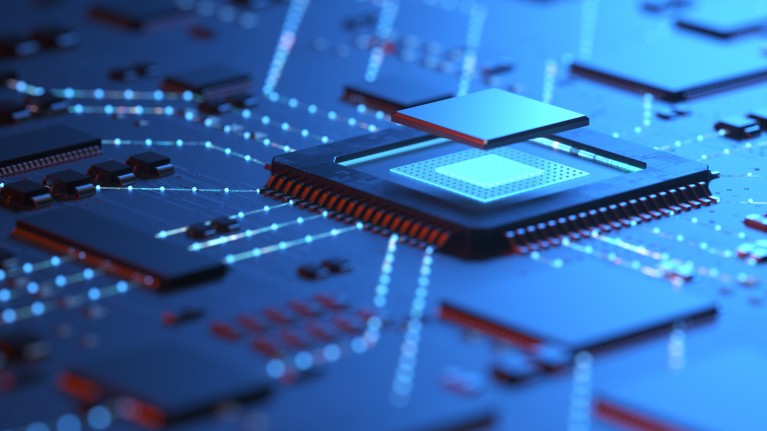
ADS8699IPW
ADS8699IPW 18-bit Analog to Digital Converters are a type of ADC that can convert analog signals into digital signals with a resolution of up to 18 bits.
Inquire Now
Description
The ADS8699IPW is a device that converts an analog signal into a digital signal that can be process by a digital system. Such as analog signal voltage or current. Digital systems such as computers or microcontrollers. An 18-bit ADC is a type of ADC that can convert an analog signal into a digital signal. The resolution can be up to 18 bit.
The resolution of an ADC determines the smallest change in an analog signal that can be detect and converted to a digital value. The higher the resolution, the smaller the changes that can be detect. Digital representations of analog signals are more accurate. An 18-bit ADC can represent a range of 2^18 or 262,144 discrete values.
The ADS8699IPW 18-bit ADC is typically used in applications requiring high precision and accuracy. Examples include scientific instruments, industrial automation, and medical equipment. They are also used in audio applications that require high resolution to capture the nuances of sound. Examples include digital recorders and mixers.
Some common examples of 18-bit ADCs are the Analog Devices AD7190, Maxim Integrated MAX11905. And Texas Instruments ADS8881. These ADCs feature high accuracy, low noise, and low power consumption, making them ideal for a wide variety of applications.
ADS8699IPW Feature
-
High resolution: 18-bit ADC can provide high resolution. Enables it to accurately convert small changes in an analog signal into digital data. This makes it ideal for applications that require precise measurement or control.
-
Low noise: The noise level of an ADC refers to the amount of unwanted signals or interference that can affect the accuracy of the conversion. An 18-bit ADC typically has a low noise level, which helps ensure accurate and reliable data.
-
High sampling rate: The sampling rate of an ADC refers to the number of times per second that it can measure an analog signal and convert it to digital data. Many 18-bit ADCs offer high sampling rates, allowing them to capture data quickly and accurately.
-
Differential Input: The differential input allows the ADC to measure the difference between two input signals. This helps reduce the effect of noise and interference on the conversion process.
-
Input voltage range: The input voltage range of an ADC refers to the maximum and minimum voltages that it can measure. Many 18-bit ADCs offer a wide input voltage range, allowing them to measure a variety of signals.
-
Low power consumption: 18-bit ADCs typically consume less power than other high-resolution ADCs. This makes it ideal for battery powered applications. The same goes for other applications where power consumption is a concern.
-
Digital interfaces: Many 18-bit ADCs offer digital interfaces, such as SPI or I2C, which can make it easier to integrate the ADC into a larger system.
FAQ
Q: What is the maximum range of values that can be represent by an ads8699ipw?
A: An 18-bit ADC can represent a range of 2^18 or 262,144 discrete values. This means that the smallest change in the analog signal that can be detected and converted into a digital value is 1/262,144th of the input range.
Q: What is the difference between an 18-bit ADC and a 16-bit ADC?
A: The main difference between an 18-bit ADC and a 16-bit ADC is the resolution. An 18-bit ADC can represent a range of 2^18 or 262,144 discrete values, while a 16-bit ADC can represent a range of 2^16 or 65,536 discrete values. This means that an 18-bit ADC can provide higher accuracy and precision than a 16-bit ADC.
Q: What are some common applications for ads8699ipw?
A: 18-bit ADCs are often used in applications that require high precision and accuracy. Such as scientific instruments, industrial automation, medical equipment . They are also used in audio applications that require high resolution to capture the nuances of sound. Examples include digital recorders and mixers.
Q: What is the sampling rate of an 18-bit ADC?
A: Sampling rates for 18-bit ADCs may vary by model and manufacturer. But many 18-bit ADCs offer high sampling rates. enabling them to capture data quickly and accurately.
Q: How do I choose the right 18-bit ADC for my application?
A: When selecting an 18-bit ADC for your application, you should consider the following shift speeds. Resolution, noise level, input voltage range, sampling rate, power consumption . You should also consider the specific capabilities and requirements of your application. e.g. do you need differential inputs or digital interface. It’s important to research different models and manufacturers to find the ADC that best fits your needs.


























































































